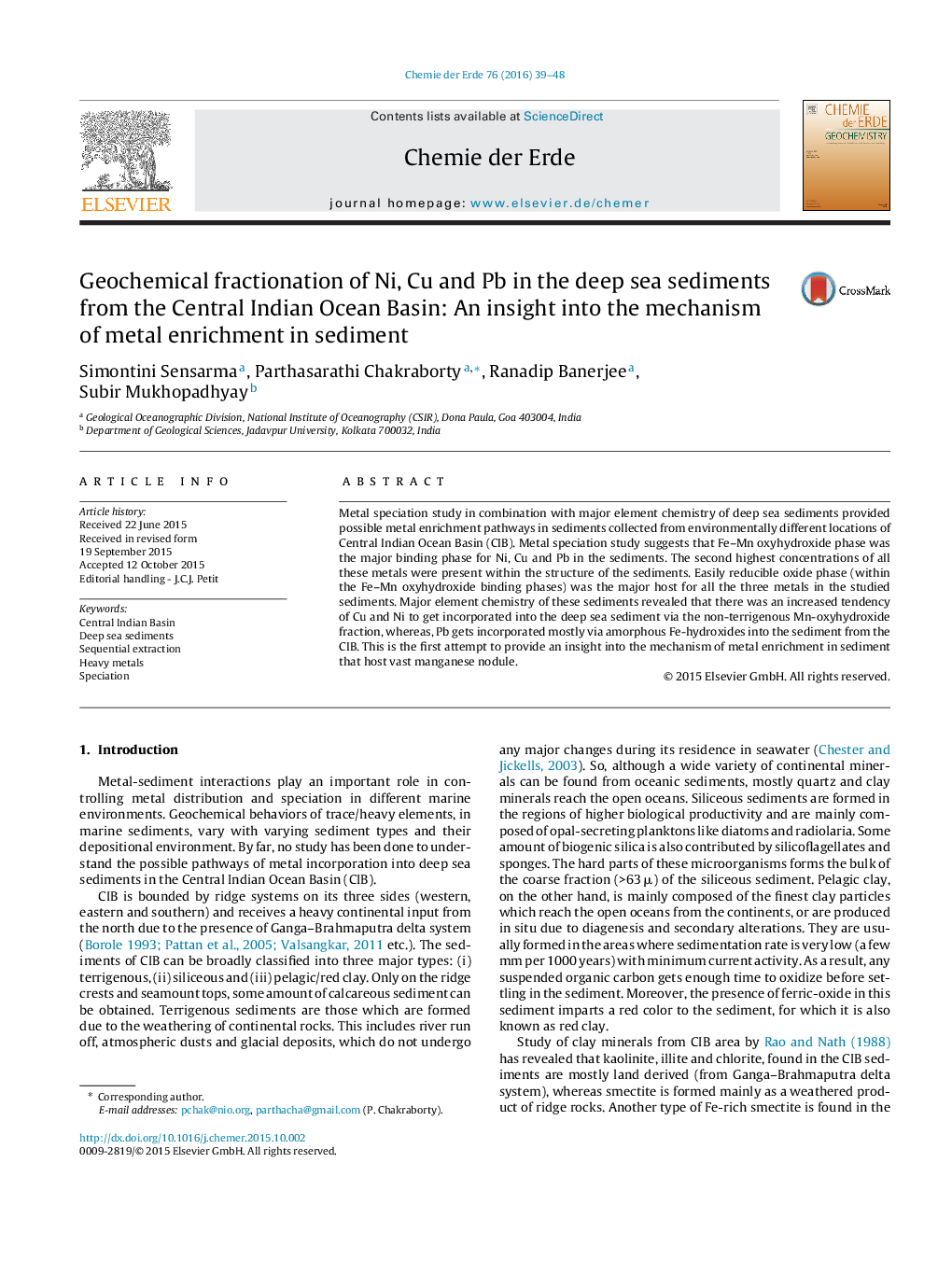| Article ID | Journal | Published Year | Pages | File Type |
|---|---|---|---|---|
| 4406791 | Chemie der Erde - Geochemistry | 2016 | 10 Pages |
Metal speciation study in combination with major element chemistry of deep sea sediments provided possible metal enrichment pathways in sediments collected from environmentally different locations of Central Indian Ocean Basin (CIB). Metal speciation study suggests that Fe–Mn oxyhydroxide phase was the major binding phase for Ni, Cu and Pb in the sediments. The second highest concentrations of all these metals were present within the structure of the sediments. Easily reducible oxide phase (within the Fe–Mn oxyhydroxide binding phases) was the major host for all the three metals in the studied sediments. Major element chemistry of these sediments revealed that there was an increased tendency of Cu and Ni to get incorporated into the deep sea sediment via the non-terrigenous Mn-oxyhydroxide fraction, whereas, Pb gets incorporated mostly via amorphous Fe-hydroxides into the sediment from the CIB. This is the first attempt to provide an insight into the mechanism of metal enrichment in sediment that host vast manganese nodule.
